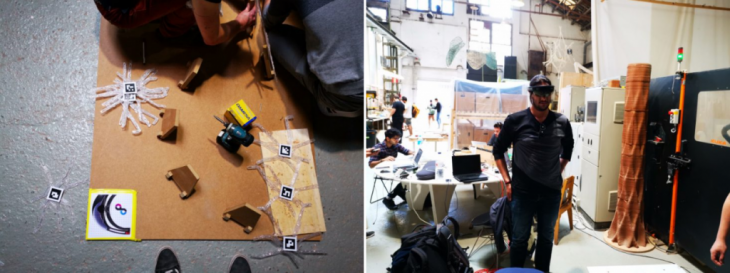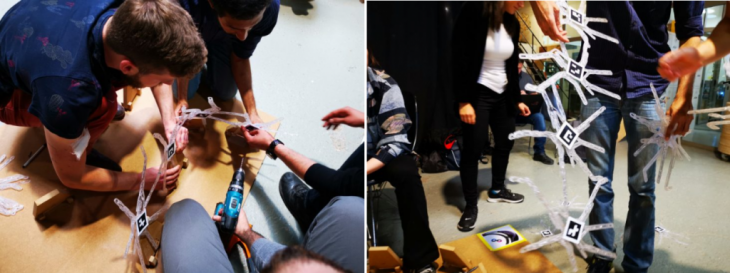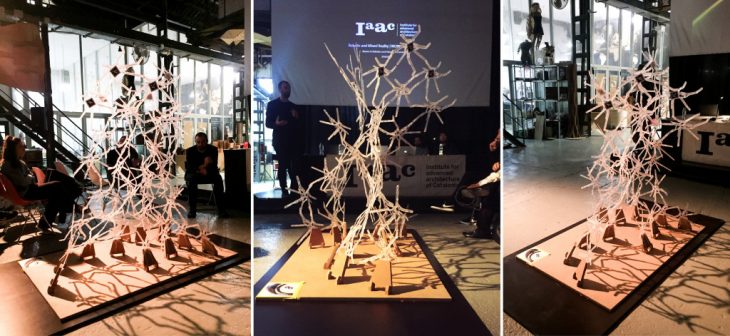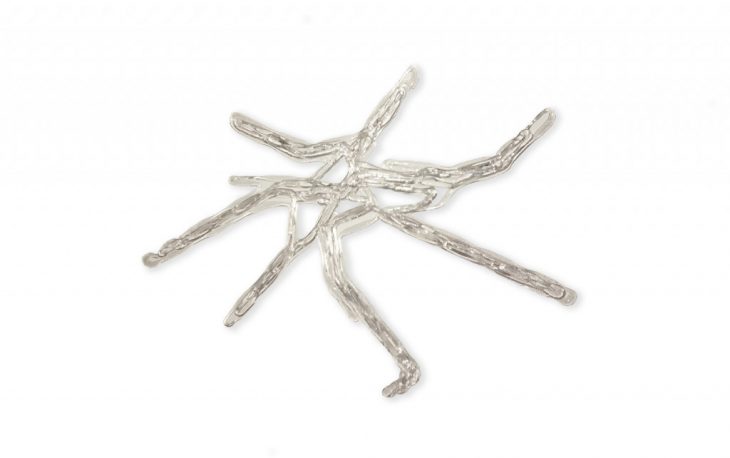Workshop Brief
This workshop was an exploration in the relationship between real-time robotics, augmented reality, material behaviour and self-organising generative models
Team Responsibilities
Due to the complexity of the process, the group was divided into 4 teams.
- PRODUCTION
- ASSEMBLY
- REINFORCEMENT
- REAL FEEDBACK INFORMATION
Assembly
The first task assigned to the assembly team was to come up with a technique to attach the AR markers to each of the components in a consistent fashion, so each component can be referenced back to the digital model according to the position and orientation in the physical space.

The next task then was coming up with a methodology of attaching the different components together to form up the overall final structure.
The assembly process was done using HoloLens that provided a real-time reference of the exact position of each components informing the whole assembly process. On top of that, the idea behind HoloLens workflow was to stream the inaccuracies in the assembly back to the digital model, that would in effect recompute the positions of remaining members.

Challenges Faced
The first challenge we faced as the assembly started was that the plastic components were either too brittle but strong or too elastic but weak. Something that required a back and force fine-tuning with the 3D printing team to come up with optimum layer thickness and width suitable for the assembly process.
The second challenge was the difficulty of aligning each component in real life with the virtual version of it in the HoloLens. Orientating components was difficult as the model in the HoloLens had tens of other components all packed next to each another, making it difficult to identify which are we looking for and it’s exact position. A way of solving that could be by integrating a code into the HoloLens code that shows the model layer by layer as it grows from the bottom to the top during assembly, thus hiding all the unnecessary information.
Another challenge was supporting the model as it was growing and preventing it from collapsing before it gains its strength from the final geometry. Integrating structural simulation in the assembly sequence could help in coming up with an informed sequence that would help to keep the structure stable and balanced as during the production.

